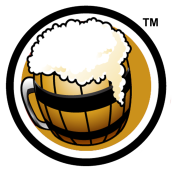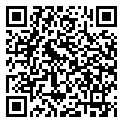Hops
|
Amount
|
Variety
|
Cost
|
Type
|
AA
|
Use
|
Time
|
IBU
|
Bill %
|
|
0.50 oz |
Domestic Hallertau0.5 oz Domestic Hallertau Hops |
|
Pellet |
3.9 |
Boil at 208 °F
|
60 min |
8.63 |
66.7% |
|
0.25 oz |
Domestic Hallertau0.25 oz Domestic Hallertau Hops |
|
Pellet |
3.9 |
Boil at 208 °F
|
10 min |
1.56 |
33.3% |
|
0.75 oz
/ $ 0.00
|
Hops Summary
|
Amount
|
Variety
|
Cost
|
IBU
|
Bill %
|
|
0.75 oz |
Domestic Hallertau (Pellet) 0.74999999828443 oz Domestic Hallertau (Pellet) Hops |
|
10.19 |
100% |
|
0.75 oz
/ $ 0.00
|
Mash Guidelines
|
Amount
|
Description
|
Type
|
Start Temp
|
Target Temp
|
Time
|
|
1.75 qt |
Strike Water (Flaked Rice) |
Infusion |
65 °F |
124 °F |
-- |
|
|
Beta-glucanase Rest (Flaked Rice) |
Temperature |
113 °F |
113 °F |
20 min |
|
|
Protein Rest (Flaked Rice) |
Temperature |
113 °F |
131 °F |
15 min |
|
8.75 qt |
Strike Water |
Infusion |
131 °F |
154 °F |
60 min |
|
|
Mash Out |
Temperature |
-- |
170 °F |
15 min |
|
20.2 qt |
Batch Sparge |
Sparge |
170 °F |
170 °F |
15 min |
Starting Mash Thickness:
1.75 qt/lb
Starting Grain Temp:
65 °F |
Other Ingredients
|
Amount
|
Name
|
Cost
|
Type
|
Use
|
Time
|
|
1 tsp |
Irish Moss
|
|
Fining |
Boil |
15 min. |
|
29.61 ml |
Phosphoric acid
|
|
Water Agt |
Mash |
1 hr. |
|
8.15 g |
Phosphoric acid
|
|
Water Agt |
Sparge |
15 min. |
Priming
|
Method: dextrose
Amount: 6.9 oz
Temp: 68 °F
CO2 Level: 3 Volumes |
Target Water Profile
Pilsen (Light Lager)
Notes
Overall Impression:
Highly carbonated, very light-bodied, nearly flavorless lager designed to be consumed very cold. Very refreshing and thirst quenching.
Aroma:
Low to no malt aroma, although it can be perceived as grainy, sweet, or corn-like if present. Hop aroma is light to none, with a spicy or floral hop character if present. While a clean fermentation character is desirable, a light amount of yeast character (particularly a light apple fruitiness) is not a fault. Light DMS is not a fault.
Appearance:
Very pale straw to pale yellow color. White, frothy head seldom persists. Very clear.
Flavor:
Relatively neutral palate with a crisp and dry finish and a low to very low grainy or corn-like flavor that might be perceived as sweetness due to the low bitterness. Hop flavor ranges from none to low levels, and can have a floral, spicy, or herbal quality (although rarely strong enough to detect). Low to very low hop bitterness. Balance may vary from slightly malty to slightly bitter, but is relatively close to even. High levels of carbonation may accentuate the crispness of the dry finish. Clean lager fermentation character.
Mouthfeel:
Very light (sometimes watery) body. Very highly carbonated with slight carbonic bite on the tongue.
Comments:
Designed to appeal to as broad a range of the public as possible. Strong flavors are a fault.
History:
Coors briefly made a light lager in the early 1940s. Modern versions were first produced by Rheingold in 1967 to appeal to diet-conscious drinkers, but only became popular starting in 1973 after Miller Brewing acquired the recipe and marketed the beer heavily to sports fans with the “tastes great, less filling” campaign. Beers of this genre became the largest sellers in the United States in the 1990s.
Characteristic Ingredients:
Two- or six-row barley with high percentage (up to 40%) of rice or corn as adjuncts. Additional enzymes can further lighten the body and lower carbohydrates.
Style Comparison:
A lighter-bodied, lower-alcohol, lower calorie version of an American Lager. Less hop character and bitterness than a Leichtbier.
Vital Statistics:
OG: 1.028 – 1.040
FG: 0.998 – 1.008
ABV: 2.8 – 4.2%
IBUs: 8 – 12
SRM: 2 – 3
Commercial Examples:
Bud Light, Coors Light, Keystone Light, Michelob Light, Miller Lite, Old Milwaukee Light
Tags:
session-strength, pale-color, bottom-fermented, lagered, north-America, traditional-style, pale-lager-family, balanced.
RESTS
- Beta-glucanase rest
• 97-113 F
• 20 min
• Followed by Protein Rest @ 122F
• Starchy Adjuncts:
o Unmalted Grains<br />
o Flaked Wheat<br />
o Flaked Rice<br />
o Flaked Corn<br />
o Rye<br />
o Oats<br />
- Protein Rest
• 122-131 F
• 10-20 min
• Under-modified malts
• Starchy adjuncts
• Improves chill haze and head retention
• Include: German and Belgian malts - esp. Pils
• Skip: British and American malts
• Allow proteolytic enzymes to work
o Primarily proteases an peptidases<br />
- Amylase Rest (in a single-infusion mash)
• 148-158 (with 151-154 F being best)
• Lower range (148-150F): less body, more fermentability, higher potential alcohol.
• Higher range (156-158F): chewier, sweeter beer w/increased quantity of dextrins.
- Lauter Rest (mash-out)
• 170 F
• 15-20 min
• Mash enzymes will be denatured
MASH THICKNESS
- A thicker mash can better protect enzymes.
- German brewers typically used a thinner mash.
• 1.75 - 2.5 quarts per pound
• Directly heated systems
• Often use decoction mashing
• Tend to make lighter-colored beer
MASH
- Add 1-pound rice hulls to every 5-pounds of grain to help keep mash temperature evenly distributed and help facilitate sparging.
- Do NOT use step mash w/high modified malts - esp. English malts.
HOPS
- German Pils-based beers:
• Hallertauer
• Tettnang
- American beers:
• Cascade
• Centennial
• Amarillo
• Simcoe
• Citra
• Summit
• Sorachi Ace
BOIL
- In paler beers without Pils malt, use a 60-75 min boil.
KEGGING & BOTTLING
• At kegging/bottling, check the final pH of the beer to make sure it is 4.5 or less and adjust it downward with phosphoric acid if necessary (shouldn't be often).

Last Updated and Sharing

- Public: Yup, Shared
- Last Updated: 2019-11-07 21:44 UTC
For quick copying and pasting to a text based forum or email.
Click the Download as HTML file button below.
Recipe costs can be adjusted by changing the batch size. They won't be saved but will give you an idea of costs if your final yield was different.
|
Cost $ |
Cost % |
| Fermentables |
$ |
|
Steeping Grains
(Extract Only) |
$ |
|
| Hops |
$ |
|
| Yeast |
$ |
|
| Other |
$ |
|
| Cost Per Barrel |
$ 0.00 |
|
| Cost Per Pint |
$ 0.00 |
|
| Total Cost |
$ 0.00 |
|
Other Brewers Who Brewed This Recipe:
Discussion about this recipe:
